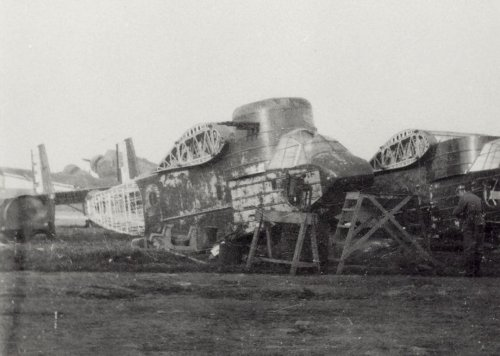As this topic came up again, I had another look at the beginning of this thread and a crazy idea came into my head,
maybe by the help of a good cup of glogg:
- That turret probably wasn't capable of firing to the sides, not to mention backwards.
- The photo quite probably was taken during the early stages of WW II, after the French surrender.
- Stargazer mentioned armoured parts on those two aircraft and hinged doors, suggesting rapid loading/unloading of troops.
- Those aircraft have many similarities to well known French types, without really matching one.
- Many of the French bomber types were already obsolete at the beginning of WW II, so no really wothwhile
assets anymore, but probably available for any task, that could have improved the situation.
- The tactical worth of attack gliders was already proven by the Germans with the capture of Eben Emael.
- To my knowledge, the French airforce didn't have any attack gliders/transports then.
Could it not be, that two (or more) obsolescent aircraft of a principally obsolescent type were converted to a kind of attack
transport, maybe glider ?
Armour for protecting the troops inside, a turret firing forward for countering the defenders during the landing ?
Hinged doors to allow for a quick exit of those troops ?
Stargazer already started along these lines, regarding it as an attack transport. On second thought, he may have been closer to
the solution, than we thought at first. Delete the engines and that turret has quite a good arc of fire, especially after touch down.
No possiblity for shooting up ? What for, on the ground ?
I have no idea, what the target of such an attack could have been on the German side, the Fuehrer Headquarters
may be too far fetched ... but bridges or other strategical important points may fit.
We know of modifications to Gotha Go 242 gliders for an attack on Scapa Flow, or Bücker Bü 181 with four Panzerfaust
anti-tank weapons. But desperate ideas of already nearly beaten countries may not have been a privilege to Germany.









